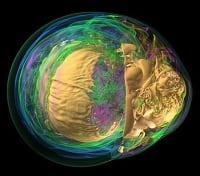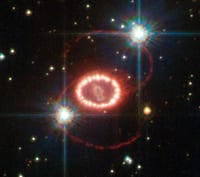In the online application form, accessible from the applications page, you will list your top 5 choices for your summer research project from the options described below.
Please note: these descriptions provide the general research area of each faculty mentor. Each year, our REU students pursue unique, timely and important projects with the faculty mentors. Specific projects will be decided upon through discussions between students and mentors.
For all questions, please contact ciera-reu@northwestern.edu.
RESEARCH PROJECT DESCRIPTIONS
Dr. Alvin Bayliss
Astrobiology, applied math, and high performance computing
Astrobiologists study of the origin, evolution, distribution, and future of life in the universe. This includes research into the potential for life to adapt to challenges on Earth and in space. This project will involve studying the evolution of two competing species with nonlocal competition. The two species will be modeled by a system of two coupled partial differential equations for the populations which will account for species diffusion, natural birth rates for each species and intraspecies and interspecies competition, reflecting a competition for a scarce resource. In many real-life ecosystems the competition terms are nonlocal. This means that at each point in space they depend on a weighted average of the populations in a neighborhood of that point, rather than the populations only at that point. One way to visualize this is that if the competition involves water in a stream as a scarce resource, the effect of the competition depends on the average of the animals drinking from the stream not just the population at any fixed point along the stream. This nonlocality makes the equations of the model integro-differential equations, i.e., the equations have both derivative terms and integral terms. Nonlocality can have a very significant effect on the evolution of the populations of the two species. In this project the role of nonlocality will be studied both by analytic methods and by computational methods.
Dr. André de Gouvêa
Cosmological, astrophysical and laboratory neutrinos: theoretical physics
Dr. de Gouvêa’s research group uses neutrinos as probes of the standard model of particle physics. Experiments have found evidence for new physics, first manifested in the leptonic sector in the form of neutrino masses. What does that tell us about the physics at very short distance scales? Are neutrinos like the quarks and charged leptons, or are they special? The student will investigate the properties of laboratory, astrophysical and cosmological neutrinos in the context of these questions.
 Dr. Claude-André Faucher-Giguère
Dr. Claude-André Faucher-Giguère
Using supercomputer simulations to understand the formation of galaxies
Our group develops large-scale simulations that follow, in unprecedented detail, the formation of galaxies from the Big Bang all the way to the present time. These cosmological simulations are evolved on massively parallel supercomputers and produce extremely rich data sets that we use to address a wide variety of key scientific questions in astrophysics and cosmology, including the processes that regulate star formation, the co-evolution of galaxies and supermassive black holes, and the interaction of galaxies with their cosmological environment. A summer project in our group would typically consist of analyzing simulations to investigate some of these questions. Another possible emphasis would be on the development of effective scientific visualization techniques to enable new discoveries using the complex simulation data. Due to the computational nature of the research, prior programming experience (especially in Python) and familiarity with Linux will be an asset to hit the ground running.
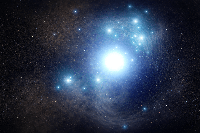 Dr. Wen-fai Fong and Dr. Charlie Kilpatrick
Dr. Wen-fai Fong and Dr. Charlie Kilpatrick
Observing Explosive Transients
Drs. Fong and Kilpatrick utilize optical and infrared imaging of nearby galaxies to identify the massive stars that explode as supernovae. Although thousands of supernovae are detected per year, only a handful are close enough to detect their progenitors, which enables us to determine the pathways through which massive stars evolve, whether they form neutron stars or black holes, and whether they explode by themselves or in binary star systems. Drs. Fong and Kilpatrick use data from across the globe and space telescopes to aid this research, especially Hubble Space Telescope, Spitzer, Gemini, and Keck as well as smaller telescopes in California, New Mexico, Chile, Australia, and South Africa. Students can choose to work with these data or on Python-based projects involving stellar evolution models and analyzing supernova light curves.
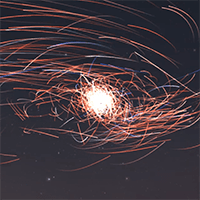 Dr. Aaron Geller
Dr. Aaron Geller
Binary Stars in Open Clusters
Observations of our Galaxy show that about 2/3 of stars like our Sun reside in close pairs, called binary stars. Furthermore, many of these stars are born within larger families known as open star clusters (which contain 100’s to 1000’s of stars). Observations of such stars provide a foundation for the theories of stellar formation and evolution. In turn, these theories underpin much of stellar astrophysics. Yet despite how common and important binary stars are, vital questions remain unanswered. Research in Dr. Geller’s group aims to answer (i) how does the local environment affect the birth characteristics of binary stars? and (ii) how are these birth characteristics modified over time by the star cluster environment? Students will use observations from ground- and space-based telescopes and the state-of-the-art Bayesian Analysis of Stellar Evolution (BASE-9) tool to investigate these questions. Local students, women and students from traditionally underrepresented groups in STEM are strongly encouraged to apply. This project also has funding available for exceptional students to continue during the academic year.
 Dr. Daniel Horton
Dr. Daniel Horton
Climate Change and Planet Habitability
Dr. Horton’s Climate Change Research Group studies climate systems across diverse spatiotemporal scales using numerical models, observational datasets, statistical analyses, and machine learning techniques. Topics explored include the detection and attribution of recent climatic change, the near-term meteorological, societal, and public health impacts of anthropogenic climate change, the evolution of Earth’s climate system through geologic time, and the sensitivity of planetary habitable zones to atmospheric and orbital parameters. Students will be trained to test hypotheses using General Circulation Models, obtain observational and model data from international community research repositories, and analyze data using Python scripting languages.
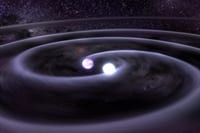 Dr. Vicky Kalogera and Dr. Zoheyr Doctor and Dr. Mike Zevin
Dr. Vicky Kalogera and Dr. Zoheyr Doctor and Dr. Mike Zevin
Astrophysics with gravitational waves and high-performance computing
As part of the LIGO Scientific Collaboration, Drs. Kalogera and Doctor work on the development of methods for the extraction of astrophysical information from gravitational-wave signals. The detection of several such events has led to questions about how compact objects form and merge through gravitational waves. These methods involve large-scale computations including Markov Chain Monte Carlo sampling and sophisticated hierarchical statistical models to obtain information about their populations. The student will be trained in the astrophysics of binary compact objects as well as in high-performance computing and applied mathematics. Other projects related to time-domain astronomy, supernova progenitors, and X-ray binaries are available in Kalogera’s group.
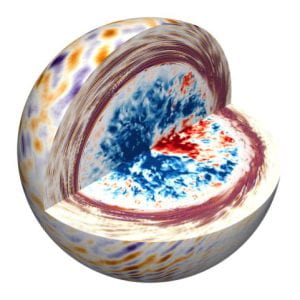 Dr. Daniel Lecoanet
Dr. Daniel Lecoanet
Stellar Interiors
Our group studies the fluid motions inside stars. These can be studied in unprecedented detail by observing the fundamental oscillation modes of the star via asteroseismology. The group uses large-scale three-dimensional numerical simulations to study processes like convection, waves and magnetic fields, which play an important role in stellar evolution. A summer project will involve connecting the 3D simulations with simplified one-dimensional models of stellar structure. Although not required, prior programming experience would be especially useful for these projects.
 Dr. Yoram Lithwick
Dr. Yoram Lithwick
Dynamics of Exoplanets
Thousands of exoplanets have been discovered. But many of their properties remain unexplained. For example, how do exoplanets end up on their observed orbits, with their observed masses and spacings? In this project, the student will simulate the late
stages of planet formation, i.e., when the planets are nearly fully-formed, but there are still many small planetesimals in the vicinity. The goal is to see how the planetesimals sculpt the planets’ orbits, and whether that can explain observed features of exoplanetary systems. The simulations will be done with the popular REBOUND code. Some experience with Python or C is desirable.
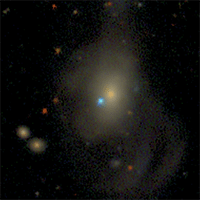 Dr. Adam Miller
Dr. Adam Miller
Stellar Explosions and Variable Stars
Dr. Miller is focused on understanding stellar systems that explode and the evolutionary pathways that lead to such explosions. As a member of the Zwicky Transient Facility (ZTF), Dr. Miller and his group have access to one of the preeminent precursors to the Vera C. Rubin Observatory. Research in the Miller group is focused on the ZTF Bright Transient Survey, which aims to spectroscopically classify every stellar explosion found by ZTF as well as obtaining early observations of Type Ia supernovae in order to understand how white dwarf stars explode. In addition to ZTF, we use telescopes from across the globe (Arizona, Australia, California, Chile, Hawaii) and in space (Hubble Space Telescope, Swift Telescope) to probe the physics of these explosions. Students will analyze ZTF data to search for young SNe and study these events using contemporaneous optical spectroscopy and ultraviolet photometry.
 Dr. Giles Novak
Dr. Giles Novak
Star formation, Instrumentation, and Observation
Dr. Novak’s research group specializes in the development of astronomical instrumentation used to study star/planet formation. Students in Novak’s group build instrumentation, analyze data, and work on science results. Available student projects include analysis of calibration and science data from the TolTEC camera that recently was installed on the Large Millimeter Telescope (Gran Telescopio Milimétrico) situated at the 15,000 foot summit of Volcán Sierra Negra in central Mexico, and applying advanced mapmaking algorithms on high performance computing clusters to data collected with TolTEC and data from the BLAST balloon-borne telescope. With its 50 m diameter primary mirror, the Large Millimeter Telescope (pictured here during TolTEC installation) is the largest telescope in the world for observations in the millimeter wavebands.
 Dr. Magdalena Osburn
Dr. Magdalena Osburn
Lipid Biomarkers in Subsurface Environments
Biological molecules record information about both their formation environment and the organisms that produce them. Dr. Osburn uses research tools from organic geochemistry, microbiology, and stratigraphy to investigate microbial and biogeochemical cycling in both modern and ancient environments. The student will work with Dr. Osburn and her group to study a class of molecules called lipids, found in microbes on Earth, and s/he will focus particularly on microbes from subsurface environments on Earth. Our understanding of these subsurface Earth microbes will allow us to prepare for future experiments in Mars landers and to hypothesize about conditions necessary for life to exist on (or inside of) asteroids and exoplanets. Students with a background in biology and/or chemistry are particularly encouraged to apply.
 Dr. Fred Rasio and Dr. Giacomo Fragione
Dr. Fred Rasio and Dr. Giacomo Fragione
Black holes, stellar dynamics, and high performance computing
Globular clusters (GCs) are very crowded stellar environments where dynamical interactions frequently trigger the formation of many exotic objects. In particular, GCs may form many merging compact-object binaries during their life, making them unique gravitational-wave source factories. Thanks to ground-based and (soon) space-based gravitational-wave interferometers, we can literally “hear” the coalescence and merger of many compact-object binaries in the Universe, but what we still do not know is how such fascinating systems formed and evolved. Understanding in more detail the evolution of stars and compact objects in GCs may be the key to answer these open questions and to ultimately provide an astrophysical interpretation to present and forthcoming gravitational-wave detections. The student will work closely with Drs. Rasio and Fragione and the other members of his research group, who will provide training in the area of stellar dynamics, stellar evolution and high-performance computing. Specifically, the student will work with state-of-the-art computer simulations of globular clusters to study the formation and evolutionary pathways of different exotic objects, including merging compact-object binaries. Many different projects, focusing on different specific aspects, are available and easily accessible to undergraduates. Many of these projects require only a basic knowledge of classical mechanics and some computing experience.
 Dr. Selim Shahriar
Dr. Selim Shahriar
Gravitational waves , instrumentation, and high-performance computing
The Shahriar group is exploring the feasibility of realizing a table-top gravitational wave detector (GWD) using two orthogonal, square-shaped ring lasers. Each has its mirror displacement sensitivity drastically enhanced – by a factor as large as a million – by the use of the superluminal effect produced via anomalous dispersion. In this project, the student will work closely with one of the graduate students in Dr. Shahriar’s research group to model the basic behavior of the GWD under various conditions. This theoretical modeling requires basic familiarity with atom-field interaction, suitable for an advanced undergraduate student.
 Dr. Tjitske Starkenburg
Dr. Tjitske Starkenburg
Galaxy evolution and its observational signatures
Galaxy evolution is an intricate process: complex combinations of physical processes lead to the galaxy properties we observe. Dr. Starkenburg uses large galaxy simulations that describe the formation of thousands of galaxies as well as detailed simulations of individual galaxies and specific physical processes to better understand this connection. One focus of research is on the outer parts of galaxies, the stellar halos, where smaller galaxies get accreted, are stripped apart by tidal forces to form thin streams of stars, that eventually disperse. These small substructures are sensitive tracers to the gravitational potential, providing clues on the masses of galaxies and the nature of dark matter. Going from galaxy formation theory all the way to predicting what observations will see, we can identify which particular observations can constrain our theories. Possible student projects include theoretical modeling, analysis of large galaxy simulations, making predictions for observations, and comparing observational results to theory.
 Dr. Allison Strom
Dr. Allison Strom
Studying how galaxies form and evolve in the early Universe
Dr. Strom’s group uses some of the largest telescopes on the ground and in space to study how galaxies grew in the first half of the Universe’s history. Specifically, they use spectroscopy (the amount of light produced by galaxies at different wavelengths, or colors) to learn about the internal properties of galaxies, such as star formation rate, chemistry, density, and ionization. Establishing how these properties change across the galaxy population and across cosmic time is critical to understanding the physical processes that cause different galaxies to follow different evolutionary pathways. A summer student working with Dr. Strom and her group would analyze new data from facilities like the James Webb Space Telescope, the Keck Telescopes, and/or the Subaru Telescope to determine the physical conditions in galaxies and compare these observations with predictions from photoionization models or computer simulations of galaxy evolution. Depending on the course of the project over the summer, there may be opportunities to continue working in the group during the academic year or future summers.
 Dr. Alexander Tchekhovskoy
Dr. Alexander Tchekhovskoy
Black holes, neutron stars, accretion, jets, and outflows
Dr. Tchekhovskoy’s group works on computational astrophysics, including large-scale numerical simulations as well as algorithm and code development. Dr. Tchekhovskoy’s research focuses on black holes, neutron stars, accretion, jets, and outflows, ranging from investigating the basic physics of astrophysical jets and disks to applying the physics results to interpreting observations and directly predicting electromagnetic emission from simulations for comparison to observations. The methods include the numerical codes, which have been co-developed by students within the group, capable of massively parallel simulations of magnetized fluid dynamics around black holes and neutron stars. The students will be trained in the code development, massively parallel computing, and the analysis and interpretation of the simulation results in a wide range of astrophysical contexts.
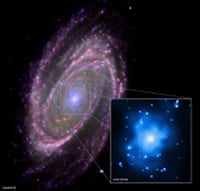 Dr. Mel Ulmer
Dr. Mel Ulmer
Observational astrophysics and applied instrumentation
Dr. Ulmer studies a wide array of astrophysical phenomena, from galaxy clusters, to tidal disruption events, to exoplanets. Observations of clusters of galaxies and transient phenomena, such as tidal disruption events, require multi-wavelength studies. A student working on this project would use archival data from a wide variety of space telescopes (Chandra, XMM, HST) supplemented by the OHP MISTRAL instrument in France and the NU access to the MMT and Keck to study the evolution of clusters of galaxies, the member galaxies, and intermediate-mass black holes. Alternatively, students could also help with developing instrumentation based on using a unique magnetostrictive technology that can be used to correct the shape of deployable space mirrors as well as deformable mirrors used for high-contrast imaging of exoplanets. The exoplanet work can also involve the analysis of archival AO observations of exoplanets.
 Dr. Jason Wang
Dr. Jason Wang
Images, Orbits, and Spectra of Exoplanets
Our group uses cutting edge technology on the largest telescopes on the ground and in space to take images of exoplanets, planets orbiting other stars. Current technologies are only sensitive to gas giant exoplanets, but studying these planets is crucial for understanding how planetary systems form and evolve. By monitoring the planetary systems over time, we can watch the planets move and trace out their orbits. Using new spectrograph technology we have developed, we can perform spectroscopy of their atmospheres to analyze what these planets are made out of. Students will have a choice of projects that span exoplanet detection, orbital monitoring, and spectroscopic analysis.




